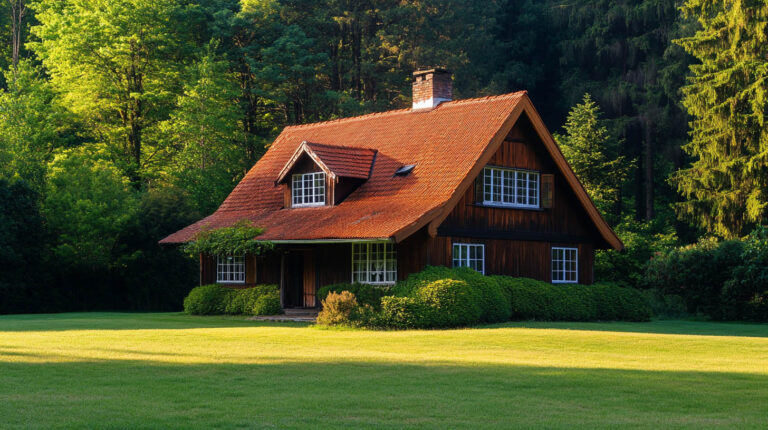
Blog
Essential Roof Maintenance Checklist for Homeowners
A well-maintained roof is crucial to the longevity and safety of your home. Replacing or repairing a roof can be costly, so taking preventive measures through regular inspections can save you money in the long run. At Avenue Roofing, we recommend homeowners conduct regular roof maintenance to ensure their roof stays in top condition.

Why Regular Roof Maintenance Matters
Proper roof maintenance not only extends the lifespan of your roof but also helps identify potential problems early, preventing costly repairs. With the right care, you can avoid damage caused by weather, debris, and general wear and tear. Here’s a comprehensive checklist to keep your roof in optimal condition.
Roof Maintenance Checklist
1. Inspect the Interior for Signs of Water Damage
Before heading outside, inspect your home’s interior for signs of water damage, such as:
- Water stains or peeling paint on ceilings and walls
- Mold or mildew around windows, walls, or ceilings
- Sagging ceilings or beams These signs often indicate roof leaks or poor ventilation, which should be addressed promptly.
2. Clean and Clear Debris from the Roof
Debris such as leaves, branches, and dirt can accumulate on your roof, leading to clogged gutters and water pooling. Make sure to remove any debris regularly to prevent damage. A clean roof surface ensures proper drainage and reduces the risk of mold or algae growth.
3. Inspect Shingles or Tiles
Examine the condition of your roof’s shingles or tiles for signs of:
- Cracking, curling, or missing shingles
- Loose or broken tiles: Damaged shingles or tiles can allow moisture to penetrate the roof, leading to structural issues. Replace any damaged materials as soon as possible to prevent further damage.
4. Check for Mold or Moss Growth
Moss or mold can grow on roofs, particularly in shaded or damp areas. Mold and moss trap moisture, which can weaken the roof’s materials over time. If you notice mold or moss, clean it off and consider installing zinc or copper strips to prevent future growth.
5. Inspect Flashing and Roof Edges
Flashing is used around chimneys, skylights, and vents to prevent water from entering your home. Check for:
- Loose or damaged flashing
- Signs of corrosion Ensure that the flashing is properly sealed and replace it if needed. Damaged flashing can lead to leaks and water damage.
6. Check Gutters and Downspouts
Clogged gutters can cause water to back up and seep into your roof. Clean your gutters regularly to ensure they are free of debris and check that downspouts are directing water away from the foundation of your home.
7. Inspect Structural Elements
Examine exterior features such as chimneys, vents, and skylights for signs of damage, rust, or wear. Cracks in chimneys or bent vents can lead to water penetration, so make sure these elements are secure and functioning properly.
8. Inspect Roof Supports and Equipment
If your roof supports heavy equipment or pipes, check for:
- Sagging pipes or equipment
- Cracks in the roof membrane Ensure that equipment supports are not digging into the roof, which can lead to damage.
9. Review Previous Repairs
Keep a record of past roof repairs and inspect these areas for signs of deterioration. Previous repairs may need to be revisited if they are showing signs of wear.
10. Schedule Professional Inspections
While DIY inspections are beneficial, professional roof inspections are still essential. Experts can identify problems that may not be visible to the untrained eye. Schedule an inspection at least twice a year or after extreme weather events.
FAQs About Roof Maintenance
Q1: How often should I clean my roof?
A: You should clean your roof at least twice a year and after any major storms to remove debris and prevent damage.
Q2: What should I do if I find damaged shingles?
A: Replace damaged or missing shingles immediately to prevent water from entering the roof structure and causing further issues.
Q3: Can mold on the roof cause long-term damage?
A: Yes, mold and moss trap moisture, which can weaken the roof materials and lead to rot or leaks.
Q4: How do I prevent ice dams from forming in winter?
A: Ensure proper roof insulation and ventilation to prevent heat from escaping and causing ice to melt and refreeze at the roof’s edges.
Q5: Should I hire a professional for roof inspections?
A: Yes, while regular homeowner inspections are helpful, a professional roofer can spot issues that may be missed and provide expert repairs.
Conclusion
Regular roof maintenance is key to extending the lifespan of your roof and protecting your home from costly repairs. By following this comprehensive checklist, you can keep your roof in excellent condition and address potential issues early. At Avenue Roofing, we offer expert inspections and repairs to help homeowners maintain their roofs year-round.
For the top 5 reasons to add a skylight to your roof, click here.



